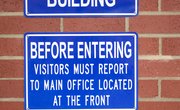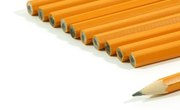The debate about high school dress codes revolves around whether students should be mandated to wear school uniforms, or if they should be allowed to choose their outfits freely. Further into this debate is if students are allowed to choose freely, what kind of regulations should be put onto those clothes?
Uniforms have for the most part been the mainstay of private schools, but public schools are increasingly also adopting dress codes in some form or another. The advantages of uniformity are that all students are on equal footing and there is less pressure on physical appearance. Some believe a uniform dress code also increases productivity in the classroom. Conversely, adopting dress codes represses individual expression through attire and may be uncomfortable for some.
Conducive Environment
According to the Public School Review, school administrators and parents believe that adopting a uniform dress code creates a more conducive learning environment because students are not distracted by the way they or others look and can focus on academics. Allowing students to attend school wearing their home clothes may lead to diverted focus because of preoccupation with fashion, trends, competition or socioeconomic status.
Students who are not in a position to dress as well as they would like might suffer from peer pressure and low-self esteem because they feel they do not fit in. Prescribing a uniform dress code takes away the burden and pressure and introduces a measure of equality in school.
Order
Uniforms introduce order and a professional tone into the school to maintain health, safety and propriety within school grounds. Adopting a dress code keeps students from wearing clothing with violent or profane messages printed on them and restricts provocative or even bulky clothing in which students can conceal weapons. Wearing uniforms can also foster a sense of student unity, pride and identification with the school, which also helps in maintaining discipline.
Represses Individuality
However, the major disadvantage with adopting high school dress codes is that it keeps students from being able to express their individuality through their attire. Clothes are an expression of a person’s style and tastes and teenagers are particularly drawn towards establishing their individual identities.
Therefore, it can be argued that in prescribing uniforms and prohibiting students from wearing what they would like, schools are stifling their freedom of expression. It must also be acknowledged that there is a way to successfully mandate what kind of personal clothing items are allowed and which are not, so while students will have freedom to dress how they want, the school can still maintain some order.
Uncomfortable
One of the cons of adopting dress codes is that uniforms can be uncomfortable and expensive. High school dress codes often require specific shirts, sweaters, jackets, skirts, socks and, in some instances, ties which students may feel uncomfortable wearing due to rigidity, itchiness or poor fit.
Uniforms are not comfortable for all students and there is a potential for discomfort that can disrupt the student’s focus. There is also the issue of costs, since parents often have to purchase multiple sets of clothes for home and school use and that may, in some cases, be too expensive for parents with low socioeconomic status or multiple children.
Related Articles
Writer Bio
Maria OCadiz has been writing professionally since 1982, most recently publishing for various websites on topics like health and wellness, and education. She holds a Master of Arts in Education. She is a former university professor, curriculum facilitator and teacher.











